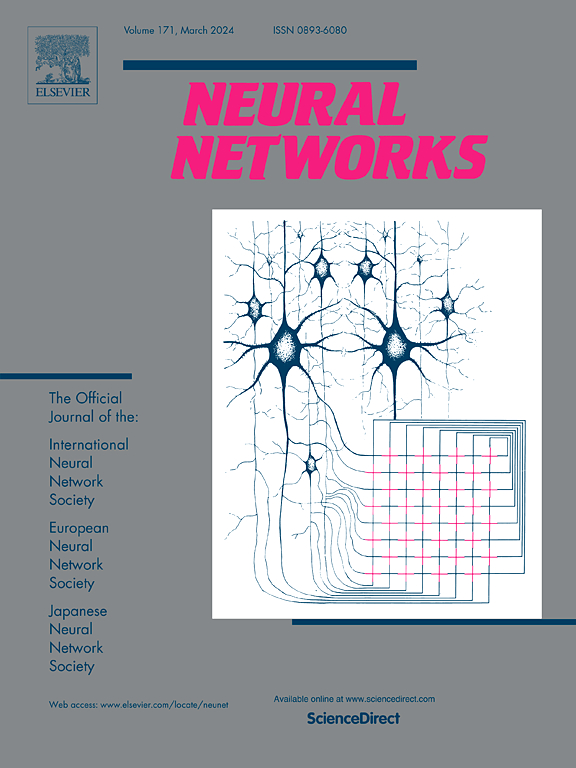Global practical finite-time synchronization of disturbed inertial neural networks by delayed impulsive control
IF 6
1区 计算机科学
Q1 COMPUTER SCIENCE, ARTIFICIAL INTELLIGENCE
引用次数: 0
Abstract
This paper delves into the practical finite-time synchronization (FTS) problem for inertial neural networks (INNs) with external disturbances. Firstly, based on Lyapunov theory, the local practical FTS of INNs with bounded external disturbances can be realized by effective finite time control. Then, building upon the local results, we extend the synchronization to a global practical level under delayed impulsive control. By designing appropriate hybrid controllers, the global practical FTS criteria of disturbed INNs are obtained and the corresponding settling time is estimated. In addition, for impulsive control, the maximum impulsive interval is used to describe the frequency at which the impulses occur. We optimize the maximum impulsive interval, aiming to minimize impulses occurrence, which directly translates to reduced control costs. Moreover, by comparing the global FTS results for INNs without external disturbances, it can be found that the existence of perturbations necessitates either higher impulsive intensity or denser impulses to maintain networks synchronization. Two examples are shown to demonstrate the reasonableness of designed hybrid controllers.
通过延迟脉冲控制实现受干扰惯性神经网络的全球实用有限时间同步
本文深入研究了具有外部干扰的惯性神经网络(INN)的实用有限时间同步(FTS)问题。首先,基于李亚普诺夫理论,通过有效的有限时间控制,可以实现有界外部干扰的 INNs 的局部实用 FTS。然后,在局部结果的基础上,我们将同步扩展到延迟脉冲控制下的全局实用水平。通过设计适当的混合控制器,我们得到了受扰 INN 的全局实用有限时间控制标准,并估算了相应的稳定时间。此外,对于脉冲控制,最大脉冲间隔用于描述脉冲发生的频率。我们对最大脉冲间隔进行优化,旨在将脉冲发生率降至最低,从而直接降低控制成本。此外,通过比较无外部扰动 INN 的全局 FTS 结果,可以发现扰动的存在需要更高的脉冲强度或更密集的脉冲来保持网络同步。两个实例证明了所设计的混合控制器的合理性。
本文章由计算机程序翻译,如有差异,请以英文原文为准。
求助全文
约1分钟内获得全文
求助全文
来源期刊

Neural Networks
工程技术-计算机:人工智能
CiteScore
13.90
自引率
7.70%
发文量
425
审稿时长
67 days
期刊介绍:
Neural Networks is a platform that aims to foster an international community of scholars and practitioners interested in neural networks, deep learning, and other approaches to artificial intelligence and machine learning. Our journal invites submissions covering various aspects of neural networks research, from computational neuroscience and cognitive modeling to mathematical analyses and engineering applications. By providing a forum for interdisciplinary discussions between biology and technology, we aim to encourage the development of biologically-inspired artificial intelligence.
 求助内容:
求助内容: 应助结果提醒方式:
应助结果提醒方式:


